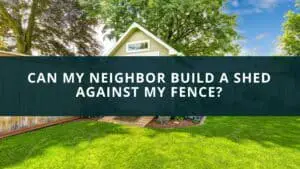Tornadoes are quite common in the Great Plains of the Central United States. This natural disaster, one of the most devastating atmospheric storms, happens very often in this region that it has been termed the Tornado Alley. So, can a tornado go through a brick house?
Bricks are very strong, but they’re not strong enough to withstand tornados. However, it’s possible to limit damage to the property by tornado-proofing your house. You can install wind-resistant roofs and impact-resistant windows, prepare home shelter, secure the entry doors, and brace garage doors.
Even though the strongest brick houses can’t withstand tornados above the EF-3 category, it’s still better than wood. The best construction against tornado is an insulated concrete form, but it can be quite costly. Here, we discuss whether a tornado can go through a brick house and how to protect your home against tornadoes.
Quick navigation
How Strong is a Brick House?
Bricks are one of the strongest building materials. This makes a brick house one likely to withstand any natural disasters. They can usually withstand hailstorms, high winds, wildfires, earthquakes, etc. But that doesn’t mean they’re invisible. Instead, they have higher durability than other materials such as wood and vinyl. The durability of bricks means they can better withstand high impact and are less likely to crack and dent.
However, brick houses aren’t safe from tornados. Regular bricks can’t withstand tornados, especially those above the EF-3 intensity. But if it’s between EF-0 and EF-3, it’s possible for a brick house to survive, especially if it’s not in the tornado’s path. Even then, brick homes can be safer in a tornado as they’re not combustible. So, they won’t aid the spread of fires which could also happen when there’s a tornado.
The only kind of building that can withstand a tornado is an insulated concrete form. This building can withstand winds of over 200 mph due to its stiffness and structural capacity. Combining modern building codes with strong concrete material makes it possible to construct a house that can survive a tornado. However, the cost of such homes in terms of construction and energy efficiency means there aren’t so popular in the country.
How To Tornado Proof Your House
Keeping your house safe in a tornado is very important, and it’s best to do it well ahead of the Tornado. Ways to make your home Tornado-resistant include:
1. Secure The Entry Doors
All the doors leading into your house should be well-secured. Use deadbolt locks and hinges and extra-long screws to fasten the door and frame to the wall framing. The last thing you want is for the wind to tear away the door from its frame. Framing is very important if the entry doors are to survive as they’re usually the weakest point. Once the door comes apart, wind and debris can enter the building, causing further damage indoors. You can also opt for a strong steel door to ensure better protection. But no matter the kind of door you get, you need to make sure the frames are strong.
2. Brace Garage Door
The garage door is another entry door that can be very vulnerable. This is the largest entry point into the house, and a missing garage door can compromise the entire structure of the building. Generally, a single car garage door can withstand up to 50 pounds of pressure per square foot, so it might not require bracing. But if you have a multi-car garage, you need to install support such as metal or wood stiffeners to make it stronger. Also, bracing makes it more resistant to wind. But if you sense a tornado and haven’t braced your door, you can quickly install a vertical brace into the wall’s framing just as if you’re boarding it up.
3. Install Wind-resistant Roof
The regular roof installations aren’t strong enough to withstand tornado winds. Thus, installing suitable roofs is important if you live in a tornado-prone area. Use hurricane clips rather than nails for the installation. These are usually compulsory in hurricane-prone areas and help maintain roof integrity.
4. Keep All Your Valuables And Documents Safe
You don’t want your certificates flying around in the wind. So, make sure they’re all in one place, and you can easily pick them up and take them with you when you’re leaving for a shelter. Although you can always store some documents online, Cloud storage comes with risks. You can also get a sturdy safe with a high-tech lock for keeping your valuables safe.
5. Have A Home Shelter
It’s important to have a home shelter when you live in a tornado-prone area. This shelter should have all the basic items for survival, such as battery-powered flashlights and radios, batteries, water, and food that doesn’t require cooking. You should also have some cash because machines might not work after a tornado. In addition, the home shelter should be the safest part of the house, usually the basement. Apart from this, only places such as storm cellars and specially constructed bunkers can offer better protection during a tornado.
If your house doesn’t have a basement, the safest place will be an inside room on the lowest floor of the house. This could be a bathroom, center hallway, or closet. It’s best if that room doesn’t have windows, and you can also stay under something heavy such as a workbench or sturdy table. It is also advisable to cover your head with a helmet, blankets, or mattresses during a tornado to prevent any debris from falling on your head. Whatever you do, it’s not advisable to stay upstairs in a tornado. Any room above the roofline would be easily exposed to the tornado.
6. Install Impact Resistant Windows or Hurricane Shutters
If you live in tornado-prone areas, you need impact-resistant windows. Shattered windows are one of the major causes of injury during a tornado. So, it’s best to go for impact-resistant windows, especially if it’s a new home or you’re remodeling. This kind of window costs more than regular windows, but they offer better protection. In some parts of Florida and Texas, where tornadoes are common, these windows are required by law.
Another option is to go for hurricane shutters which can also be customized to fit your residence. At worst, you should have plywood covers for your windows. You can have these covers made long before the tornado. Make sure they’re big enough to cover the window’s exterior frame and have long screws for attaching them to the windows. Put them up when a storm is near for protection. It’s important to close all windows when a tornado is coming. Leaving the window open will increase the air pressure inside the house, forcing the house to collapse like a balloon after reaching its expansion limit.
In Conclusion
Brick houses are quite strong, but they can’t withstand a tornado. This will depend on the tornado’s intensity and whether it’s in the tornado path. Regardless, it’s always better to tornado-prof your house.




